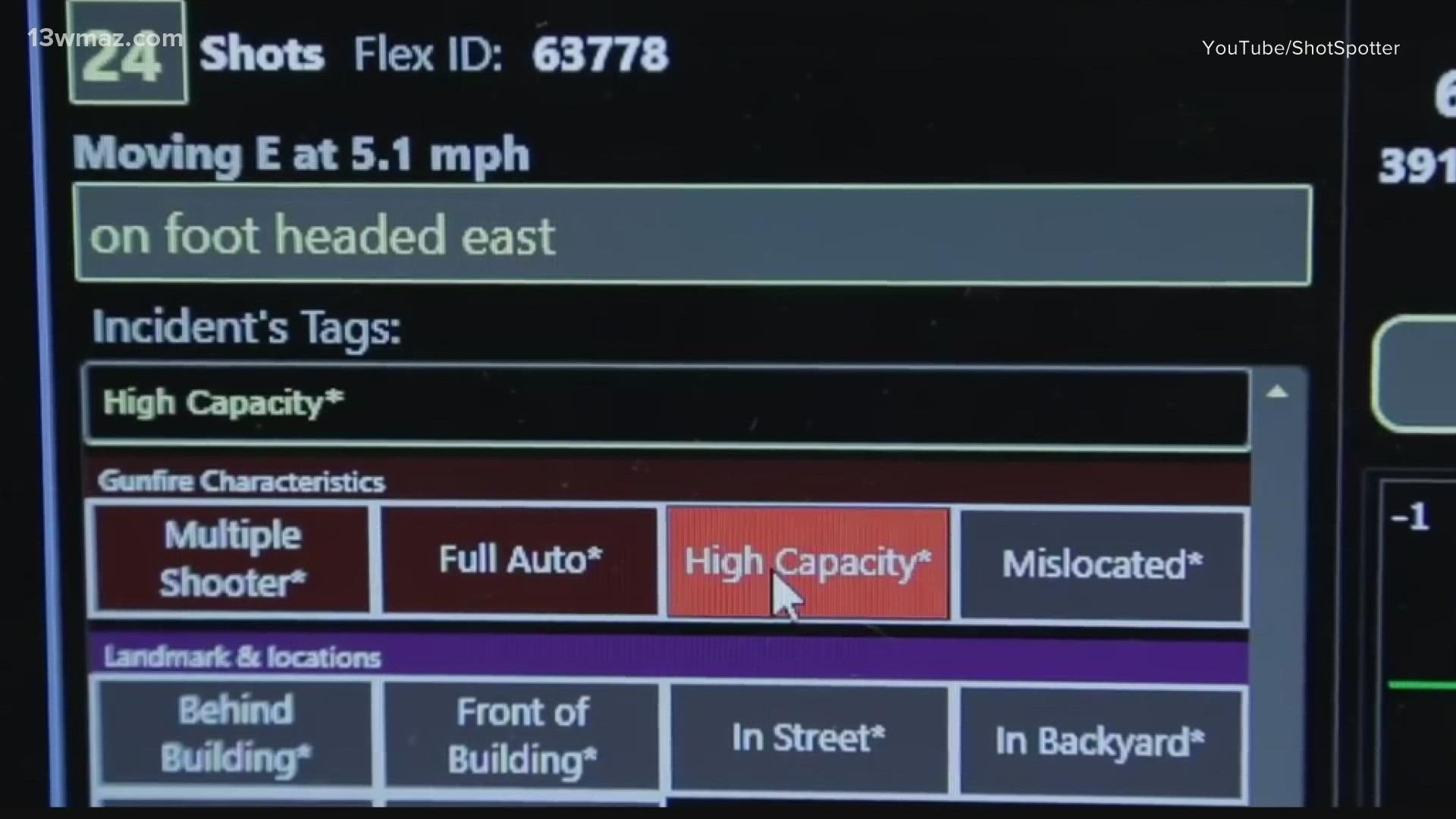MACON, Ga. — Macon-Bibb County leaders approved spending nearly $2 million of American Rescue Plan money on a new gunshot detection system called ShotSpotter.
The commission heard a presentation Tuesday morning from the company ShotSpotter.
They then decided to vote on the item in a special called meeting Tuesday afternoon.
Commissioners voted unanimously to approve the system.
How is this new tech designed to work, and what will the county be getting over the next four years?
The county's contract lasts four years, and they plan to spend about $500,000 a year.
ShotSpotter says the technology alerts police to gunfire and tells them exactly where it is, even if no one calls 911.
Here is a breakdown of how it works.
ShotSpotter will place acoustic sensors at spots around the county like rooftops and utility poles.
Those sensors will pinpoint gunfire.
Ron Teachman, the Director of Public Safety Solutions for ShotSpotter, explains, "They can hear the gunfire a quarter-mile, half-mile away, and they locate it by timestamping each sensor that heard it and triangulate it mathematically to determine where each gunshot to fire."
Then, the system will alert 911 dispatch and the sheriff's office in less than a minute. ShotSpotter also sends authorities a summary.
"We tell you the timestamp. We tell you if it's relevant, if it's more than one shooter, is there a high-capacity weapon involved," Teachman said.
The sheriff and mayor say this new technology pairs with resources they already have, like surveillance cameras and the National Integrated Ballistic Information Network.
They say all that should help them solve more cases and reduce gun violence.
"It will help us to better protect the community and have the engagement and the data that we need to deploy our resources like we need to take these violent criminals off the street," said Sheriff David Davis.
According to the contract, that half-million a year will cover only seven square miles out of Bibb County's 255.
Davis said, "It can cover more than what you think for seven square miles."
Sheriff Davis would not say what neighborhoods would be covered, but he says it will be parts of town with the highest number of shots fired calls.
But is it worth this big chunk of change?
Sheriff Davis says they'll have to put the new tech to the test.
"If we solve one homicide for it, save a life, or if we get a situation where we get a ShotSpotter call and we see someone has been shot and we're able to respond a lot quicker because of ShotSpotter data, is that life worth a half million? I think people would argue it is," Davis said.
One question many of people may have is, "Will the sheriff's office be able to respond to these calls?"
13WMAZ has reported for years about their staffing problems. Davis says that this will undoubtedly be a challenge, with the number of deputies they have and calls getting backed up, but he says they'll respond as quickly as possible.
With this new tech, he says they can get to the exact scene of a crime and collect evidence.
The new technology would also document shots fired over the past 24 hour, three days, and seven days.
Teachman says this is a data-driven, intelligence-led, and bias-free approach to distributing resources and deputies.

